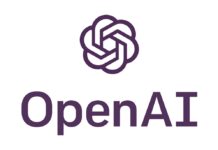Artificial Intelligence (AI) is no longer confined to the realm of science fiction. OpenAI’s latest advancements in AI technology, particularly with the unveiling of their new o1 models, have pushed the boundaries of what machines can do. These models represent a breakthrough in AI’s reasoning and inference abilities, marking a significant step toward superintelligence—a level of artificial intelligence that surpasses human capabilities in every domain.
In a recent post titled The Intelligence Age, Sam Altman, OpenAI’s CEO, issued a bold prediction. He believes superintelligence might emerge within “thousands of days.” This statement, while vague, suggests that AI systems could achieve human-like intelligence in as little as five to ten years. But what does this really mean for society, industries, and humanity at large? Altman and others at OpenAI have set the stage for an unprecedented leap in intelligence, one that could redefine the future.
Table of Contents
OpenAI’s Vision for Superintelligence
OpenAI has always been at the forefront of AI development, and its vision for super-intelligence reflects a carefully crafted strategy. The organization believes that within the next decade, AI systems could outperform human experts across numerous fields, from medicine to law to business. Altman suggests that these AI systems could even operate at a scale comparable to the world’s largest corporations, fundamentally transforming how industries function.
Central to this vision is the notion that scaling existing AI technologies will eventually result in super-intelligence. OpenAI’s research into deep learning, particularly its emphasis on expanding computational power and neural network sizes, has been key to achieving this. According to Altman, deep learning has already proven to be remarkably effective, and with further scaling, AI systems will become more capable, adaptive, and autonomous.
OpenAI’s New o1 Models
The o1 models introduced by OpenAI are a significant leap forward in AI capabilities. These models have shown an unprecedented ability to reason, solve complex problems, and make inferences across a wide range of tasks. This represents a significant milestone for OpenAI as they inch closer to achieving super-intelligence. The o1 models, in particular, showcase how scaling neural networks can lead to sophisticated intelligence that mimics human-like reasoning.
However, while the models are promising, they also raise important questions about the timeline Altman suggests for super-intelligence. Are we truly on the brink of witnessing AI systems surpass human intelligence in just a few thousand days? Altman’s confidence stems from the progress demonstrated by the o1 models, but many in the AI community remain skeptical.
Ilya Sutskever and Safe Superintelligence Inc.
One of the key figures in OpenAI’s journey toward superintelligence is Ilya Sutskever, the co-founder and former chief scientist at OpenAI. Sutskever has long advocated for scaling AI infrastructure as the primary method for achieving super-intelligence. His belief in the potential of neural networks and computational power remains unwavering. However, in recent years, Sutskever left OpenAI to establish his own company, Safe Super-intelligence Inc. (SSI), with the goal of pursuing this ambitious vision.
SSI focuses on increasing the size of neural networks and exploring safe paths toward superintelligence, ensuring that these systems are developed responsibly. For Sutskever, the dawn of superintelligence is inevitable, but managing its development and impact on society will be one of the most significant challenges of our time.
The Skeptics: François Chollet’s Doubts
Despite the optimism surrounding AI’s progress, not everyone in the field shares Altman’s enthusiasm. François Chollet, a prominent researcher at Google, has been particularly vocal about his skepticism. According to Chollet, merely scaling existing AI technologies, such as large language models (LLMs), is unlikely to result in Artificial General Intelligence (AGI) or super-intelligence.
Chollet introduced a metric known as ARC-AGI, designed to measure the comprehensive intelligence of AI models. By his standards, OpenAI’s o1 models did not perform as well as expected. He argues that simply increasing the size of neural networks won’t necessarily bring about the sophisticated, generalized intelligence that Altman and Sutskever predict. Instead, Chollet believes that new approaches and innovations are needed to overcome the limitations of today’s AI systems.
Yann LeCun’s Critique of LLMs
Another critical voice in the debate on superintelligence is Yann LeCun, Meta’s chief AI scientist. LeCun is highly critical of large language models like those developed by OpenAI, describing them as little more than glorified autocomplete systems. He argues that while LLMs are impressive in terms of their ability to generate coherent text, they lack the deeper cognitive capabilities required to build “world models”—a crucial component for achieving true superintelligence.
LeCun and others believe that while scaling is an important aspect of AI development, it will take more than that to unlock super-intelligence. In their view, groundbreaking innovations in areas like planning, reasoning, and abstract thinking are required before machines can truly surpass human intelligence. Without these advancements, AI will remain limited in scope, even if neural networks continue to grow.
The Roadmap to Superintelligence
Given the rapid pace of advancements in AI, it’s clear that super-intelligence is no longer a distant dream. But how do we get there? OpenAI’s roadmap is focused on scaling existing technologies and building more sophisticated models. However, this journey is fraught with challenges. As AI models become more complex, the need for better infrastructure, larger datasets, and more computational power will only increase.
Altman and his team at OpenAI are confident that by continuing to scale AI systems, we will reach a point where intelligence surpasses human capabilities. However, this path is not without risks. Super-intelligence, if not carefully controlled, could lead to unintended consequences, including disruptions to industries and labor markets, ethical dilemmas, and even the potential for misuse.
AI and Society: The Impact of Superintelligence
One of the most profound implications of superintelligence will be its impact on society. AI systems capable of performing tasks at a level superior to human experts will revolutionize industries such as healthcare, finance, and education. For businesses, this presents both opportunities and challenges. On the one hand, AI could drive significant productivity gains and innovation. On the other hand, it could displace millions of jobs, particularly in industries reliant on human labor.
The ethical considerations surrounding super-intelligence are equally important. As AI systems become more powerful, there is an increasing need to ensure that they are used responsibly. OpenAI has consistently advocated for the responsible development of AI, but as these systems grow more advanced, society will need to develop new frameworks for governance and regulation.
The Role of Governments and Regulations
As superintelligence approaches, governments around the world must grapple with the complexities of regulating these powerful systems. OpenAI has already proposed a framework for regulating AI, emphasizing the need for international cooperation and oversight. However, creating effective regulations for AI, especially systems that are smarter than humans, is a daunting task. It requires balancing innovation with safety and ensuring that super-intelligence is developed for the benefit of all humanity.
Governments will also need to consider the broader societal impact of super-intelligence, including its effects on economic inequality, privacy, and security. The challenge will be to develop policies that encourage innovation while protecting the public from the potential risks associated with super-intelligence.
Collaboration Between AI Pioneers
Despite the competition among AI organizations, there is growing recognition that collaboration will be essential for achieving superintelligence safely. OpenAI, Safe Super-intelligence Inc., and other leading organizations are likely to work together to accelerate progress while ensuring that these powerful systems are developed with safety in mind.
By collaborating, AI pioneers can share knowledge, resources, and best practices, increasing the likelihood of success. However, competition will also play a role, particularly as companies and governments race to develop AI systems that can outperform their rivals.
Ethical Considerations and Risks
The development of superintelligence presents both incredible opportunities and significant risks. One of the primary concerns is the potential for misuse. If super-intelligence falls into the wrong hands, it could be used to create autonomous weapons, spread disinformation, or undermine democratic institutions. There is also the risk of AI systems developing unintended behaviors, leading to outcomes that are harmful to society.
To mitigate these risks, OpenAI and other organizations are committed to ensuring that super-intelligence is developed with safety as a top priority. This includes researching ways to align AI systems with human values and creating fail-safes to prevent misuse.
The Future of AGI: What Experts Predict
Despite the debate surrounding super-intelligence, there is growing consensus that we are getting closer to AGI—an AI system capable of performing any intellectual task that a human can. Experts predict that AGI could emerge within the next few decades, with super-intelligence following shortly thereafter.
However, opinions differ on how quickly this will happen. Some believe that we are just a few years away from AGI, while others argue that it will take longer due to the limitations of current AI technologies. Regardless of the timeline, it is clear that AGI and super-intelligence will have a profound impact on the future of humanity.
How Businesses Can Prepare for AI’s Future
For businesses, the rise of super-intelligence presents both opportunities and challenges. Companies that embrace AI and integrate it into their operations will be better positioned to succeed in the future. However, businesses that fail to adapt may find themselves at a disadvantage as AI systems become more capable and autonomous.
To prepare for the future, businesses should invest in AI technologies, develop strategies for integrating AI into their operations, and stay informed about the latest developments in AI research. By doing so, they can future-proof their organizations and stay ahead of the competition.
Conclusion: The Dawn of Superintelligence
As we stand on the brink of a new era, the possibilities presented by super-intelligence are both exciting and daunting. OpenAI, under the leadership of Sam Altman, is pushing the boundaries of what AI can achieve, and their o1 models represent a significant step toward realizing the dream of superintelligence.
However, the path to superintelligence is not without challenges. As AI systems become more powerful, society will need to grapple with the ethical, social, and regulatory implications of these technologies. By working together, governments, organizations, and researchers can ensure that super-intelligence is developed safely and used for the benefit of all.
The future is coming faster than we might think, and with it, the dawn of superintelligence.













